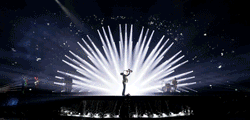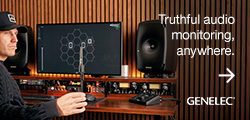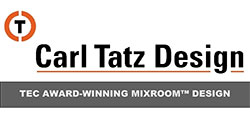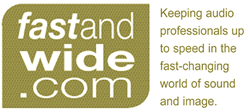![]() The FIA couldn’t have asked for more when Nicolas Prost and Nick Heidfeld collided on the final corner and allowed Lucas di Grassi to win the inaugural Formula E fully-electric single-seat race.
The FIA couldn’t have asked for more when Nicolas Prost and Nick Heidfeld collided on the final corner and allowed Lucas di Grassi to win the inaugural Formula E fully-electric single-seat race.
After 25 laps of the 3.44-km Beijing circuit at speeds topping 250mph, the race had proven Formula E’s ability to deliver the performance and drama of high-performance combustion engine racing.
The speed of the cars also brings the risks of full-blown Formula One, which were made abundantly clear by driver Jules Bianchi, who is now fighting for his life in a Japanese hospital after crashing his Marussia at Suzuka in heavy rain. But the reasoning behind the new formula is rather removed from the dangers of high-speed racing.
Green light…
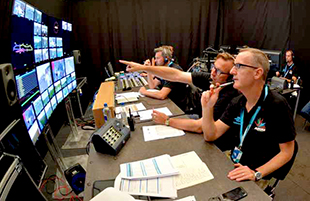
The Formula E series was devised by FIA President Jean Todt and Spanish businessman Alejandro Agag in 2011. ‘We expect this championship to become the framework for research and development around the electric car, a key element for the future of our cities,’ Agag explains on the event’s website.
‘Key considerations for us were that Formula E promotes an environmentally friendly form of racing, and also the fact that this is a worldwide series with races being held in nine countries across four continents,’ echoes FAL Director, Andy Unsworth. FAL Systems was asked in 2013 to devise the systems integration services for the event’s broadcasting. The brief was marked by the requirement that the company would provide all audio and video for the transmission so as to have minimal environmental impact.
‘The original concept for the world feed broadcast facilities was to expand the system [independent TV production company] Hayfisher currently uses for its coverage of other race series, such as British F3 and GT championships – based on using HD Digital RF links to provide a quick and cost-effective solution for track coverage,’ Unsworth explains. ‘The environmental considerations shaped our thinking in the design stage and led us to focus on elements such as extremely compact design with as low a weight as possible – while still providing a state-of-the-art broadcast centre.’
Equipment choices were based on reliability, functionality, value for money, support and weight/power consumption. The resulting system is built into seven ‘intermodal’ pods – four for technical facilities (engineering/MCR, camera control, replay and sound) and three for storage of equipment. The production area is supplied as a flightcased flyaway system to be built up at each venue in a dedicated cabin.
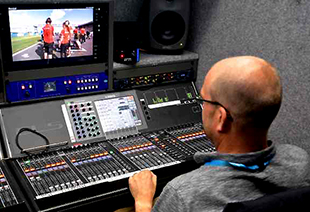 After considering the options, a hybrid router was to be the central hub of the system: ‘Once we’d decided on the Miranda 8280 router, that paved the way for other equipment decisions,’ Unsworth says. ‘Miranda was able to offer a fully integrated solution with the Kaleido Modular-X units and also the Karrera vision mixer. These are controlled by the router controller, and effectively become part of the router making a very powerful system that is easy to configure for the end-user. By using the Hybrid router, we were able to keep as much of the audio embedded within the HD signals as possible minimising the cabling required.’
After considering the options, a hybrid router was to be the central hub of the system: ‘Once we’d decided on the Miranda 8280 router, that paved the way for other equipment decisions,’ Unsworth says. ‘Miranda was able to offer a fully integrated solution with the Kaleido Modular-X units and also the Karrera vision mixer. These are controlled by the router controller, and effectively become part of the router making a very powerful system that is easy to configure for the end-user. By using the Hybrid router, we were able to keep as much of the audio embedded within the HD signals as possible minimising the cabling required.’
With 13 Grass Valley LDX Flex cameras as main track cameras (there is provision for an additional Super Slow Mo at a later date) there can be up to four track mics per camera – the final position and number of mics for each camera is decided by the sound team at each race meet. These are Rode NTG-2, NTG-3B or NTG-8 models, chosen because they provide a robust, cost-effective, quality option. ‘A good selection of each type are available for the sound crew to mix-and-match for each of the race venues,’ Unsworth says.
‘The cameras only have two analogue mic inputs on each head, but also have an AES input, so we got Chris Thorpe at CTP systems to build us some custom mic amps,’ he continues. ‘These each have two high-quality amps with variable mic gain, Pad, 48V and a high-pass filter. They derive their power from the local 12V DC output on the camera head and have an AES output to the camera. The only downside is that the gains have to be preset before the race but, as the electric cars are much quieter, there is enough headroom in the mic amps to cope.
‘The four audio feeds are embedded onto the HD outputs and sent to the matrix. There are four locked-off camera positions around the circuit, which come back over fibre; there is the option to bring back two channels of audio from each position. A single channel of audio is available from each of the onboard camera feeds.’
The matrix provides 40 de-embedding hybrid inputs and 48 embedding outputs, all supporting 16 channels of audio, and there are four Madi inputs and four Madi outputs available. Any embedded audio source brought into a de-embedding input can be routed to any of the Madi buses or directly to an embedding output. The Madi buses serve as two mains and two backups for redundancy, should an output die or a cable between the engineering pod and sound pod be damaged.
The radio cameras for the pit lane reporters have Sennheiser radio mic kits docked with the cameras, with Lectrosonics IEMs providing cue feeds for the presenters.
Live in the fast lane
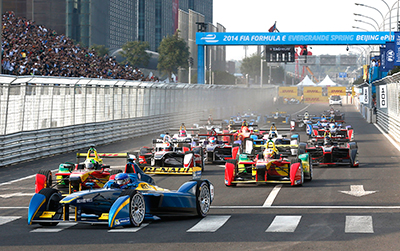
‘Unlike other race series none of the equipment will be flown back to base after each race, instead it will travel onwards to the next venue,’ Unsworth explains. ‘This has meant we have had to put together a system we were confident could withstand travelling around the world for nine months of the year without coming back for constant servicing and repairs – this has demanded a huge amount of detailed consideration of the mechanical and system design, and then into the equipment choices we made to be certain of worldwide support in case of failures.
After investigating audio console options, Yamaha’s CL series offered a working alternative to a large format broadcast console, which was beyond the project’s budget. ‘We chose two Yamaha CL5 desks working as independent consoles, one handling the race effects and the other handling the in-vision reporters, music feeds and commentary,’ Unsworth says.
‘The big bonus for us was the inclusion of Dante as standard, and we quickly realised we could build a powerful system around this. The console also has some nice broadcast features not usually found on consoles at this price level.’ Hayfisher also uses Yamaha consoles in its trucks, demonstrating the consoles’ reliability, with Yamaha’s international reach promising further support if needed.
Four Focusrite RedNet 6 Dante interfaces (providing 512 audio paths) serve as the interface between the Madi streams from the Matrix and the Yamaha consoles, with two Rio 1608-D stageboxes for local analogue sources such as commentators and local mix feeds. All of the analogue audio I/O appears on a patchfield in the audio pod, including the local inputs and outputs on each console.
‘Being able to route audio in three separate places we decided to try and keep the mapping as simple as possible,’ Unsworth says. ‘We’ve broken the audio down into four channel blocks making keeping track of audio routing easy, and then left the routing matrix within each of the RedNet boxes as one-to-one – so Madi Input 1 is router to Dante Output 1 et cetera. This leaves the sound engineers to perform all the routing with the CL5, as they have all the audio on the network available to them in a sensible format. It’s easy if they need to change something quickly.
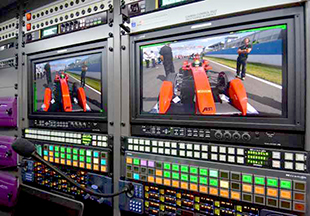
‘The other advantage of using Dante for the audio is the ability to add resources very easily. Another console could easily provide another dedicated mix for a different feed, or extra I/O could be added by bringing along a Dante compatible I/O box.’
One of the limitations of small mixing consoles is automation. FAL got around this by building a bespoke unit that converts the vision mixer tally outputs into a Midi signal, which is then fed into the CL5 to trigger associated audio faders to assist mixing – ‘very useful with the quick picture cuts on the short and fast circuits being used in this series’.
Genelec 8040 loudspeakers are main monitors in the audio area, fed via a custom CTP system monitoring unit that has a TFT touchscreen display with analogue-style PPM. This allows monitoring from either CL5, as well as from the embedded main audio feeds. A DK-technologies DK1 meter provides loudness metering. The engineering pod has a pair of Genelec 8020s for monitoring outgoing and incoming embedded audio, with a Bel BM-A1-16SHD providing metering and confidence monitoring.
Clear-Com Eclipse Pico HX matrices handle comms, each with 36 ports linked via Cat5 to provide 72 non-blocking ports. Each camera uses two 4-wire ports – one for production and one for engineering. Twenty-one ports are used for production and engineering panels with a combination of 12 key and 24 key panels. The remaining ports are for external analogue 4-wires. The two matrices are located in the engineering pod but can be controlled via network from the sound pod or the engineering pod.
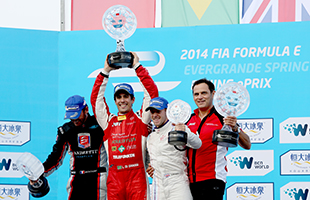
‘Clear-Com also provides the systems for all team communications so it’s been easy for us to integrate with their feeds to be able to listen to driver/team comms,’ says Unsworth. ‘Radio talkback uses four Tait base stations with Motorola handsets.’
In line with the growing ‘entertainment’ element of Formula One, music also plays a part in Formula E, with a DJ to keep crowds entertained during and in between track action. The audio and video from the DJ is fed to the main OB compound via fibre, so that it can be added to the final mix. A spot on the audio playback system is also employed in the sound pod to provide additional music and FX, including effects for replay wipes triggered from the vision mixer.
While the 2014 Formula One engine specifications are still attracting criticism for the loss of their signature roar, Formula E seems to have a sound of its own – which Unsworth describes as ‘almost jet like’. It may be worth getting used to it in the broadcast before it arrives on the world’s roads.




